传世珍宝宋徽宗草书《千字文》御笔御书真迹
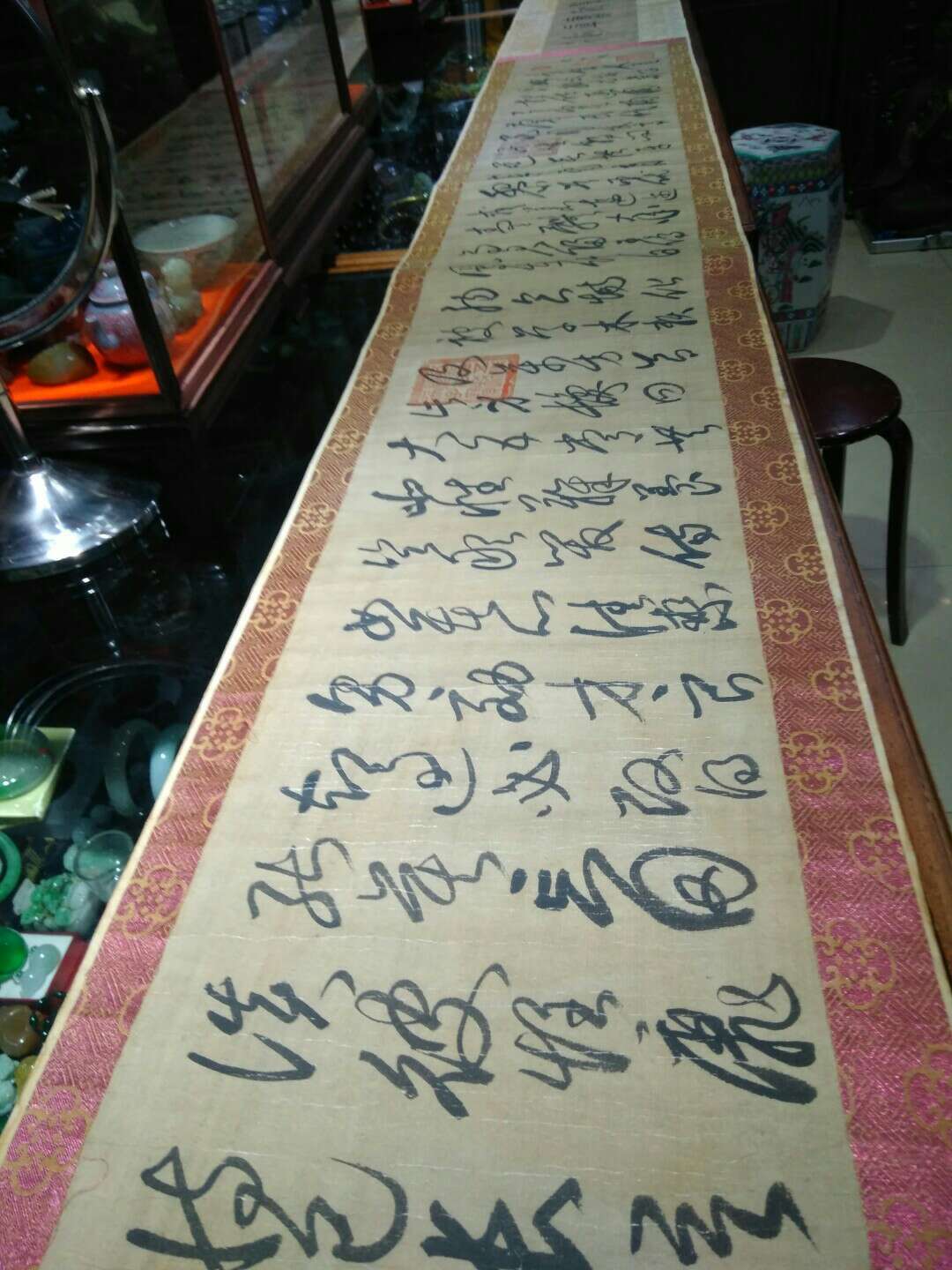
传世珍宝宋徽宗草书《千字文》片段御笔御书真迹
Fragments of thousand character script written in cursive script of Huizong of Song Dynasty
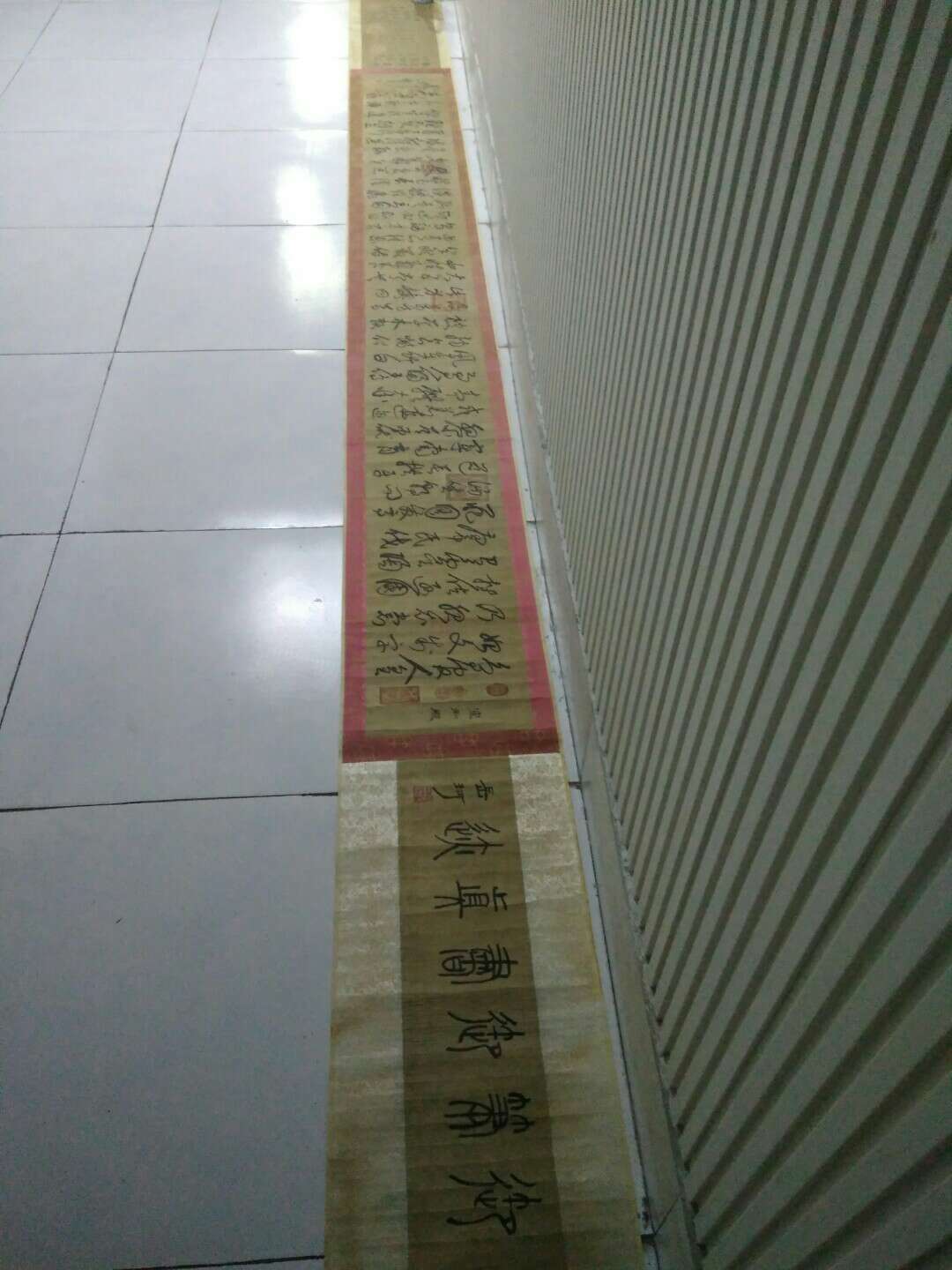

岳珂卷首题跋:
Yue Ke's preface and postscript:
《御笔御书真迹》 岳珂印信(朱印)
"Authentic works of imperial pen and imperial script" Yue Ke's seal (Zhu Yin)
【岳珂(1183年—1243年),字肃之,号亦斋,晚号倦翁,江西江州(今江西九江)人。进士出身,邺侯、权户部尚书,岳飞之孙,是岳飞三子岳霖的小儿子,南宋文学家,相州汤阴人。】
[Yue Ke (1183-1243), named Suzhi, was born in Jiangzhou, Jiangxi Province (now Jiujiang, Jiangxi Province). Born as a scholar, he was the youngest son of Yue Lin, the third son of Yue Fei, a writer of the Southern Song Dynasty and a native of Tangyin, Xiangzhou.]
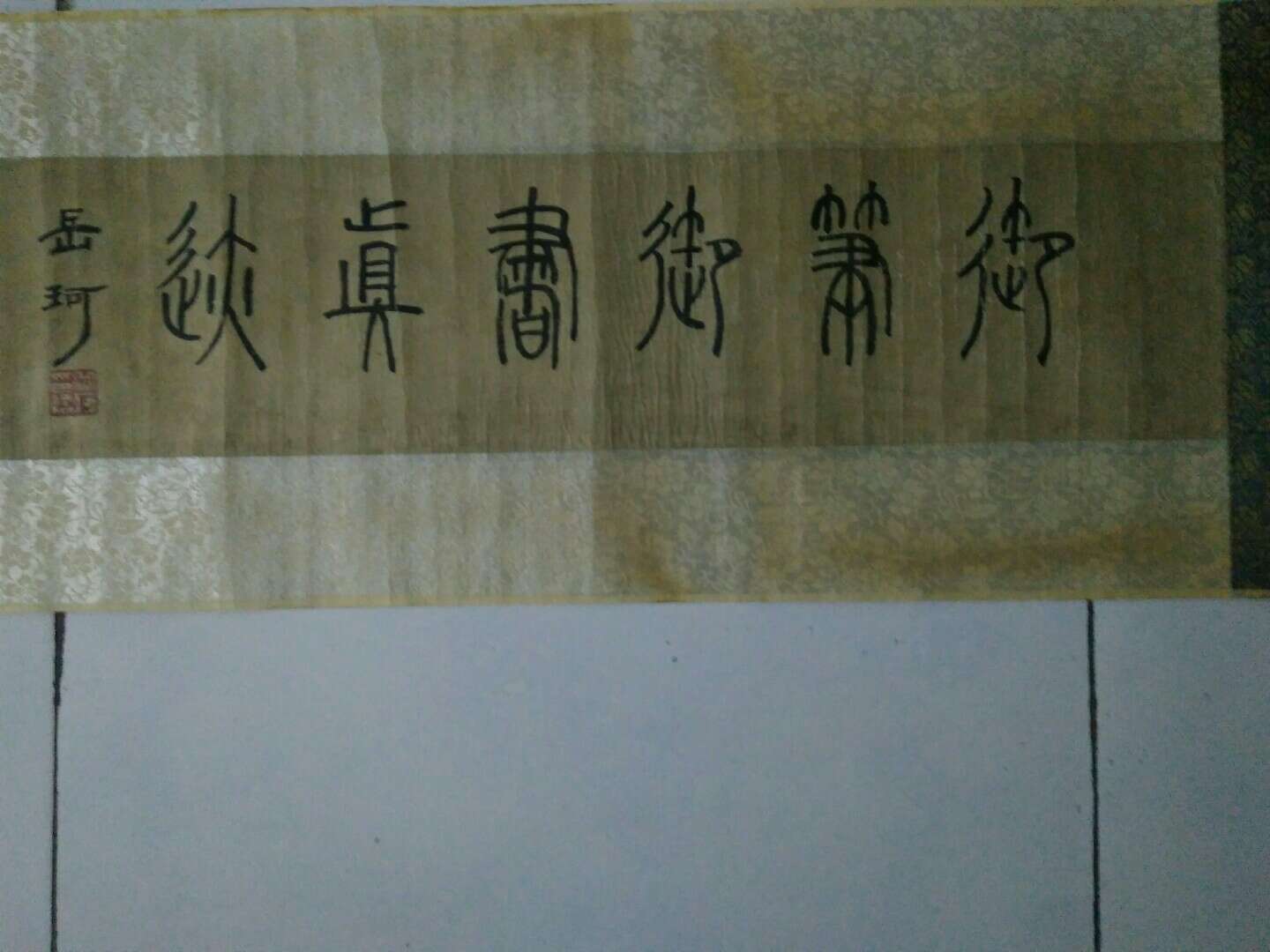

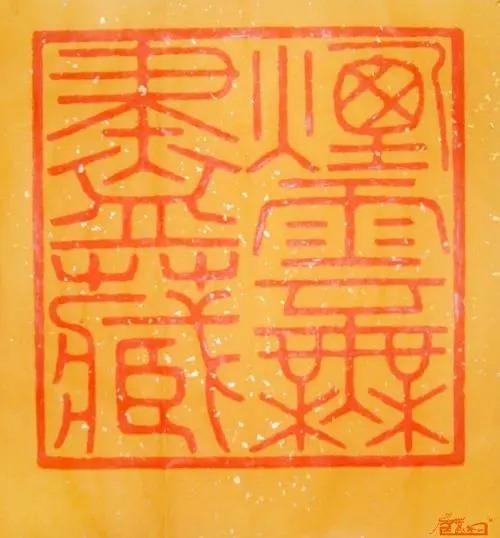
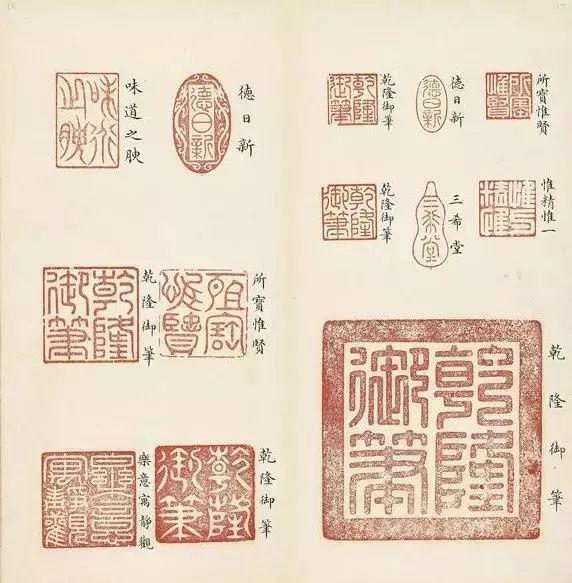
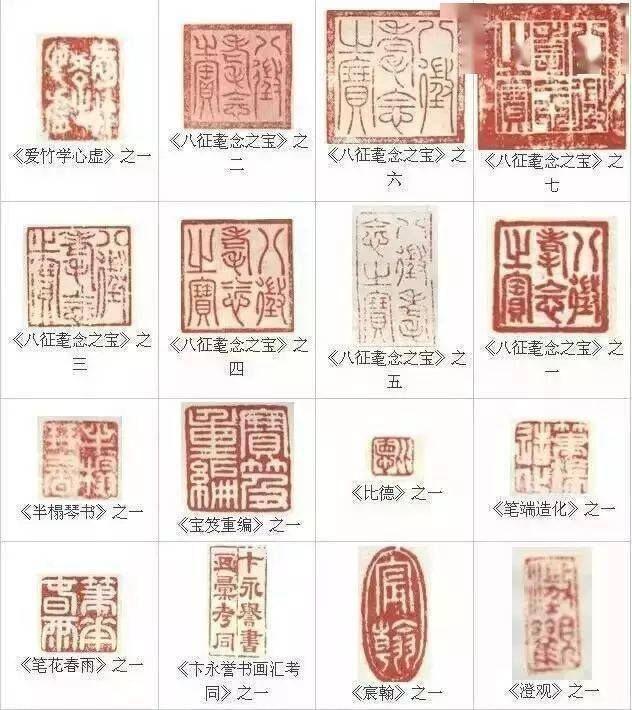
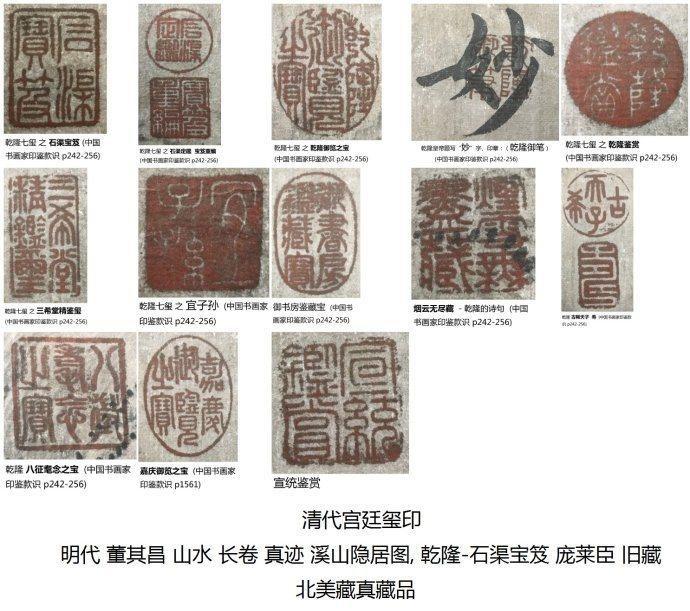
鉴藏款识:“岳珂印信”、“如是观”、“柯南”、“御赏”(慈禧)、“五福五代堂古稀天子之宝”、“乾清宫宝”、“八徵耄念之宝”(大方章)、“八徵耄念之宝”(小方章)、““画禅”、“大雅斋”(慈禧)、“双龙”方印(宋徽宗)、“烟云无尽藏”、“所宝唯贤”、“放翁”、“山阴始封”。
Collection experience: "Yue Ke Yinxin", "Rushi Temple", "Conan", "Yushang" (Cixi), "ancient treasure of the emperor of five blessings and Five Dynasties hall", "Qianqing palace treasure", "treasure of eight signs of Mao Nian" (Dafang seal), "treasure of eight signs of Mao Nian" (small square seal), "painting Zen", "dayazhai" (Cixi), "double dragon" square seal (song Huizong), "endless collection of smoke and clouds" "The only treasure is virtuous", "release the Weng" and "the mountain is sealed at the beginning".
卷后首跋:徽宗草书传世墨迹绝品 黄伯思(1079—1118年北宋晚期重要的文字学家、书法家、书学理论家)识
The first postscript after the volume: Huang Bosi (an important philologist, calligrapher and calligrapher theorist in the late Northern Song Dynasty from 1079 to 1118), a masterpiece of calligraphy handed down by Huizong cursive script
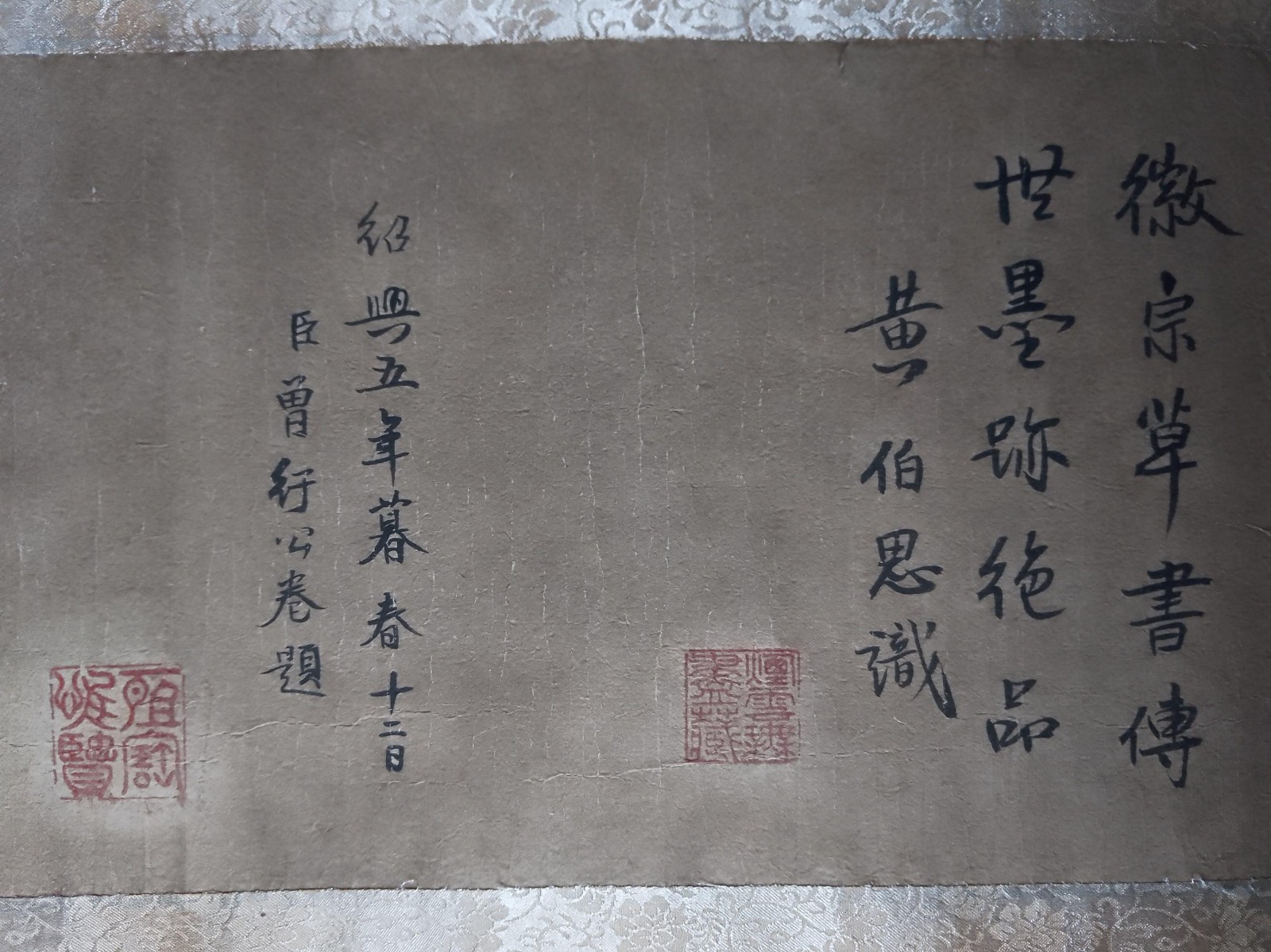
跋文二:绍兴五年暮春十二日 臣曾行公卷题【王曾(978年12月27日~1038年12月12日)字孝先。青州益都(今山东省青州市)人。北宋名相、诗人。】
Postscript 2: on the 12th day of the late spring of the fifth year of Shaoxing, the minister once issued the public volume Title [Wang Zeng (December 27, 978 ~ December 12, 1038) with the word Xiaoxian. He was born in Yidu, Qingzhou (now Qingzhou City, Shandong Province). He was a famous minister and poet of the Northern Song Dynasty.]
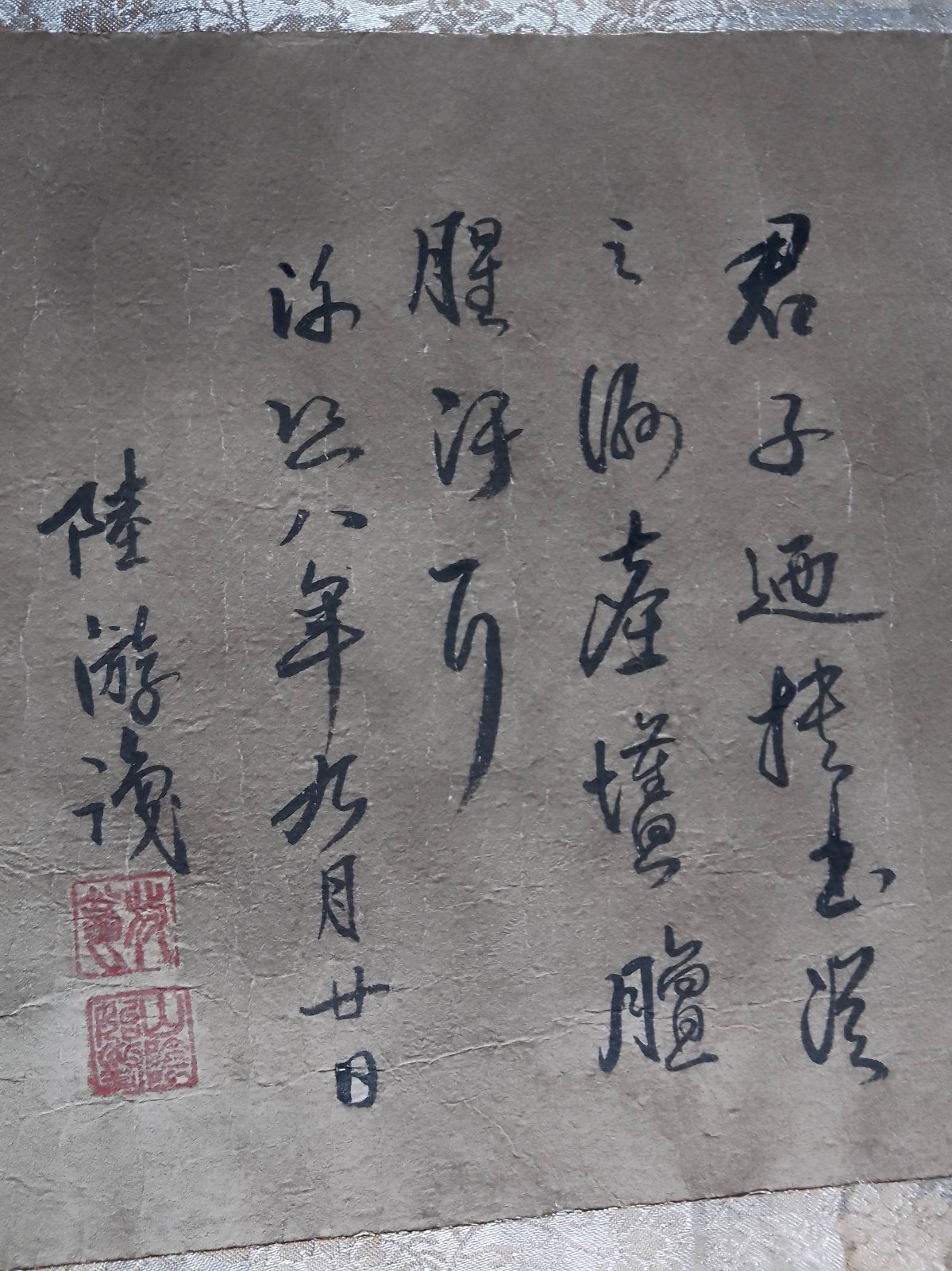
跋文三:君子迺挾书(挟)從(从)之,渝尘增膻(羶)腥汗耳
Postscript 3: the gentleman Kennedy followed the book, and the dust of Chongqing increased the smell of smell and sweat
淳熙八年九月廿日 陆游识 钤印:“放翁” “山阴始封”
On September 20, the eighth year of Chunxi, Lu you recognized the seal: "release Weng" and "seal in the shade of the mountain"
【陆游(1125年11月13日-1210年1月26日),字务观,号放翁,汉族,越州山阴(今浙江绍兴)人,尚书右丞陆佃之孙,南宋文学家、史学家、爱国诗人。】
[Lu You (November 13, 1125-january 26, 1210), with the word Wu Guan, No. fangweng, Han nationality, from Shanyin, Yuezhou (now Shaoxing, Zhejiang Province), the grandson of Lu Dian, the right Cheng of the Shangshu, a writer, historian and patriotic poet of the Southern Song Dynasty.]
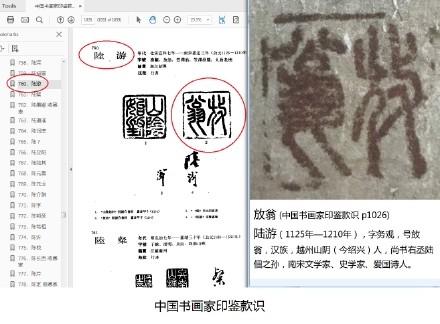
此幅《千字文》手卷横300 厘米,纵30.5 厘米,其中宋徽宗书法横220厘米。36行,144字。
The scroll of thousand character script is 300 cm in horizontal direction and 30.5 cm in vertical direction, among which the calligraphy of Huizong of Song Dynasty is 220 cm in horizontal direction. 36 lines, 144 words.
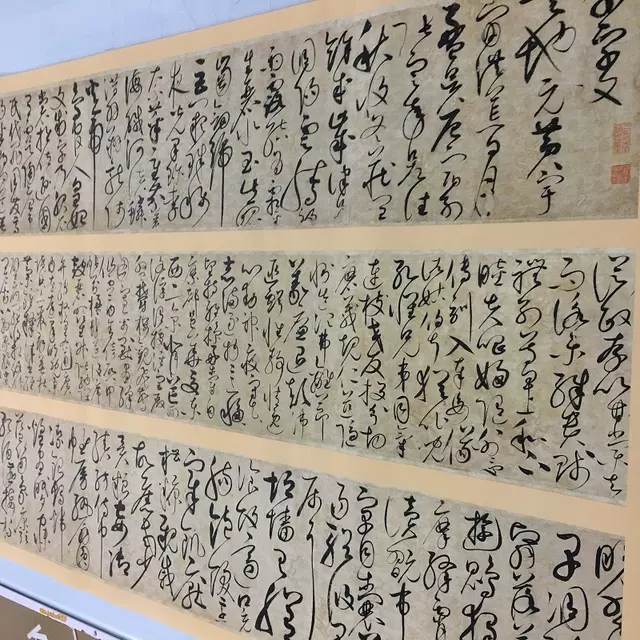

正文:
Text:
宣和殿
Xuanhe Hall
鸟官人皇 始制文字 乃服衣裳 推位让国 有虞陶唐 吊民伐罪 周发殷汤 坐朝问道 垂拱平章 爱育黎首 臣伏戎羌 遐迩一体 率宾归王 鸣凤在竹 白驹食场 化被草木 赖及万方 盖此身发 四大五常 恭惟鞠养 岂敢毁伤 女慕贞洁 男效才良 知过必改 得能莫忘 罔谈彼短 靡恃己长 信使可复 器欲难量 墨悲丝染 诗赞羔羊 景行维贤 克念作圣 德建名立 形端表正 空谷传声(意译:鸟官、人皇,这都是上古时代的帝皇官员。苍颉(jié)创制了文字,嫘(léi)祖制作了衣裳。唐尧、虞舜英明无私,主动把君位禅让给功臣贤人。安抚百姓,讨伐暴君,是周武王姬发和商王成汤。贤明的君主坐在朝廷上向大臣们询问治国之道,垂衣拱手,毫不费力就能使天下太平,功绩彰著。他们爱抚、体恤老百姓,使四方各族人俯首称臣。普天之下都统一成了一个整体,所有的老百姓都服服贴贴地归顺于他的统治。凤凰在竹林中欢乐的鸣叫,小白马在草场上自由自在地吃着草食。圣君贤王的仁德之治使草木都沾受了恩惠,恩泽遍及天下百姓。人的身体发肤分属于“四大”,一言一动都要符合“五常”。诚敬的想着父母养育之恩,哪里还敢毁坏损伤它。女子要仰慕那些持身严谨的贞妇洁女,男子要仿效那些有才能有道德的人。知道自己有过错,一定要改正,适合自己干的事,不要放弃。不要谈论别人的短处,也不要依仗自己有长处就不思进取。诚实的话要经得起考验,器度要大,让人难以估量。墨子悲叹白丝被染上了杂色,《诗经》赞颂羔羊能始终保持洁白如一。要仰慕圣贤的德行,要克制私欲,努力仿效圣人。养成了好的道德,就会有好的名声,就如同形体端庄了,仪表就正直了一样。空旷的山谷中呼喊声传得很远),后书有似“天”(“天下一人”四字之合体)字草押,钤“双龙”方印(朱印)。
The bird official and the emperor first made the words, but the clothes pushed the position, so that the state-owned Yu Tao Tang hanged the people and attacked the crime. Zhou FA Yin Tang sat in the court and asked the arch Ping Zhang. The first minister of AI Yu Li, Fu Rong Qiang, was well-known and led the guests to Wang Mingfeng. He was turned into grass and trees in the bamboo Baiju food farm and covered this body with ten thousand square. The four five permanent respects are respectful. But how dare Ju Yang destroy women? Mu chaste men's effect is the only way to change their conscience. Don't forget to talk about their shortcomings and rely on themselves The long messenger can restore the instrument, but it is difficult to measure the ink, sorrow, silk, dyeing, poetry, praising the scenery of the lamb. Wei Xianke reads it as holy virtue, builds the name, stands in the shape, and expresses the sound in the empty valley. These are imperial officials in ancient times. Cangjie (Ji é) created words, and Lei (L é I) Zu made clothes. Tang Yao and Yu Shun were wise and selfless, and took the initiative to surrender the throne to meritorious officials and sages. King chengshang and King Jifa pacify the people. Sitting in the court, the wise monarch asked the ministers about the way of governing the country. Hanging his clothes and bowing his hands, he could make the world peaceful without effort and make outstanding achievements. They caress and sympathize with the people, and make people of all nationalities bow down and submit to the throne. The whole world was united as a whole, and all the people were obedient to his rule. The Phoenix chirped happily in the bamboo forest, and the little white horse ate grass freely on the grassland. The benevolent rule of the sage and virtuous king has benefited the plants and trees, and the grace has spread all over the people all over the world. People's body and skin belong to the "four major", and every word and move should conform to the "five constant". Sincerely think of the grace of parents' upbringing, where dare you destroy it. Women should admire those chaste women who are strict in their conduct, and men should emulate those who are talented and moral. If you know you are at fault, you must correct it. Don't give up what is suitable for you. Don't talk about other people's shortcomings, and don't rely on your own strengths. If you are honest, you should stand the test, and the degree of instrument should be large, which is difficult to measure. Mozi lamented that white silk was dyed with variegated colors, and the book of songs praised that the lamb could always remain white as one. We should admire the virtues of saints, restrain selfish desires and strive to emulate saints. If you cultivate good morality, you will have a good reputation, just as if your body is dignified and your appearance is upright. In the open valley, the shouts spread far away). The latter book is like a cursive script with the words "heaven" (the combination of "one person in the world") and a square seal with the seal of "Double Dragons" (vermilion seal).

双龙方印,印文是两条龙的形象,没有文字,看到这方印在作品上,就可以断定是宋徽宗经过手的名书画了或者说是他的御书真迹。
Double dragon square seal. The seal text is the image of two dragons. There is no text. When you see this side printed on the works, you can conclude that it is the famous calligraphy and painting of song Huizong, or the authentic work of his imperial calligraphy.
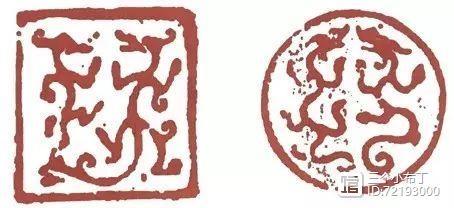
“大雅斋”是懿贵妃(即慈禧太后)给自己在圆明园天地一家春的御用画室选定的斋号,当时在该画室的门外还悬挂同名的“大雅斋”匾额。和道光皇帝的“慎德堂”一样,属于私人的专用,不管是专属的瓷器还是书画,如果印“大雅斋”一定是慈禧的心爱之物,很少示人的。
"Dayazhai" was the Zhai number selected by imperial concubine Yi (Empress Dowager Cixi) for her royal studio in Tiandi spring, Yuanmingyuan. At that time, a plaque with the same name "dayazhai" was hung outside the door of the studio. Like Emperor Daoguang's "Shende hall", it belongs to private use. Whether it is exclusive porcelain or calligraphy and painting, if the "dayazhai" is printed, it must be a favorite of Cixi and rarely shown to people.
《千字文》在中国书法史上颇负盛名,这是一篇用1000个不同的常用汉字写成的文章,每一个字都是常用字,这1000个字包罗甚广,几乎涵盖了中华文化当中的所有类目,包括了诸子百家、天文历法、为人处世等诸多方面。是古代的学生蒙学的必备读物。
QianZiWen is quite famous in the history of Chinese calligraphy. It is an article written with 1000 different common Chinese characters. Each word is a common word. The 1000 words cover a wide range and cover almost all categories of Chinese culture, including hundreds of schools of thought, astronomy and calendar, life and so on. It is a necessary reading for students in ancient times.
宋徽宗在治国上毫无作为,但在艺术上的造诣却相当之高。他不仅对诗词歌赋颇有研究,还对绘画和书法十分专长。也是在他的推动下,北宋的文化和绘画艺术获得了空前发展,乃是我国历史上文化最为繁荣的时期。
Song Huizong did nothing in governing the country, but his artistic attainments were quite high. He not only has a good study of poetry, songs and Fu, but also has great expertise in painting and calligraphy. Also under his promotion, the culture and painting art of the Northern Song Dynasty achieved unprecedented development, which is the most prosperous period of culture in China's history.
他所创造的瘦金体已经无人能及,后世更是不可超越,就算他的行书和草书也是一绝,其中的一幅作品《千字文》更是被称为草书三绝之一。
The thin gold body he created has been unmatched by others, and can not be surpassed by later generations. Even his running script and cursive script are unique, and one of his works, QianZiWen, is known as one of the three wonders of cursive script.
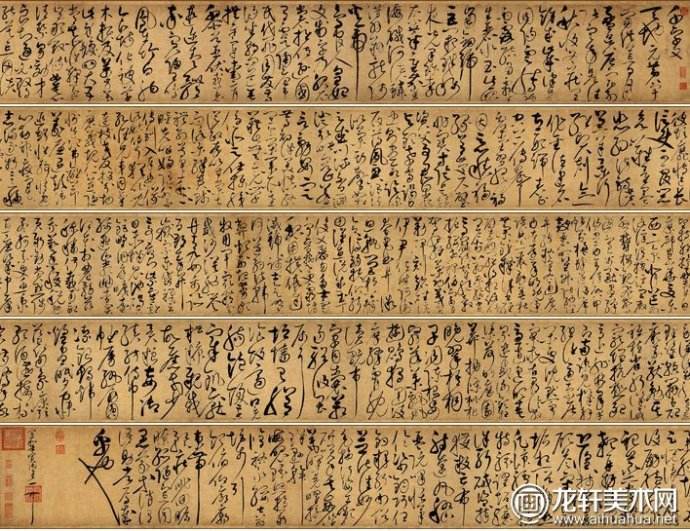
宋徽宗流传下来的真迹,现在价值连城,一幅字竟然能值5个亿,真是让人想不到。后世有无数人模仿宋徽宗的书法,往往只是形相似,而令人们都无法模仿的境界,其实就是他字体中的精气神,字体可以临摹,但是内在神韵却无法学,无法做到神相似,这也许就是宋徽宗的字画值钱的原因所在。
The authentic works handed down by Emperor Huizong of Song Dynasty are now invaluable. It's amazing that a word can be worth 500 million. Countless people in later generations imitate song Huizong's calligraphy, which is often only similar in shape, but the realm that people can't imitate is actually the essence and spirit in his font. The font can be copied, but the internal charm has no law and can't be similar in spirit. This may be the reason why song Huizong's calligraphy and painting are valuable.
宋徽宗在40岁(宣和壬寅1122年)的时候,曾经写过一卷《草书千字文》,写在上面的狂草书千字文一气呵成,笔势凌空,劲利流畅,变幻莫测,犹如长江奔腾,一泻千里,运笔迅疾流畅,结体奇宕潇洒。此卷作于宣和四年(1122),是赵佶40岁书法大成时之作品,为稀世珍品。《石渠宝笈·初编》、《格古要论》诸书著录。此作如今被估值超过了100亿,光是创作这件作品所用的宣纸,现代人都造不出来,这种工艺已经失传了!
At the age of 40 (Xuanhe renyin 1122), Huizong of Song Dynasty once wrote a volume of "thousand character cursive script". The thousand character cursive script written on it was completed in one go. The strokes were high in the air, powerful and smooth, unpredictable, like the surging of the Yangtze River, flowing thousands of miles, with fast and smooth pen movement and strange and natural structure. This volume, written in the fourth year of Xuanhe (1122), is the work of Zhao Ji when he was 40 years old and achieved great success in calligraphy. It is a rare treasure. The first edition of Shiqu Baoji and gegu Yaolun. This work is now valued at more than 10 billion yuan. Modern people can't make the rice paper used to create this work alone. This technology has been lost!
《草书千字文》是宋徽宗赵佶传世的狂草作品,是中华十大传世名帖之一。作于1122年(宣和壬寅年),是赵佶四十岁时的精意作品,笔势劲利奔放流畅,变幻莫测,一气呵成,极奔放驰骋之致,颇为壮观,是继张旭、怀素之后的杰作,更为稀世珍品。
"Thousand characters in cursive script" is a wild cursive work handed down by Zhao Ji, Huizong of Song Dynasty. It is one of the top ten handed down famous posts in China. It was written in 1122 (the year of Xuanhe renyin). It is a fine work of Zhao Ji at the age of 40. It is vigorous, unrestrained, smooth, unpredictable, completed at one go, extremely unrestrained and galloping. It is quite spectacular. It is a masterpiece after Zhang Xu and Huai Su and a rarer treasure.
它是难得一见的徽宗草书部分,以用笔、结体的熟稔精妙乃至书写意境而论,与怀素相比,委实伯仲难分,被誉为“天下一人绝世墨宝”。
It is a rare part of the cursive script of Huizong. In terms of the familiarity and subtlety of the pen and structure and even the artistic conception of writing, compared with Huai Su, it is really indistinguishable. It is known as "a peerless ink treasure in the world".
此卷草书《干字文》,其所以可贵,在於作者掌握了狂草的基本法则,“使 转”不违笔意,达到了“纵心奔放”,所谓“意先笔後,潇洒流落”的艺术效果。
This volume of cursive script "Ganzi Wen" is valuable because the author has mastered the basic law of wild grass, "turning" does not violate the meaning of the pen, and has achieved the artistic effect of "unrestrained and unrestrained", which is called "meaning first, pen first, natural and unrestrained".
有人认为这可能是徽宗临写怀素之本。他们的根据认为此种草法出自怀素和尚,兼之宣和内府藏有怀素 《千字文》有四轴之多,完全有条件从事临摹,我们以为这种怀疑不是毫无根据的,但不一定完全符合实际情形。
Some people think that this may be the foundation of Huizong's temporary writing of huaisu. Their basis is that this kind of cursive method comes from monk Huai Su, and there are four axes of Huai Su's thousand character text in Xuanhe neifu, which is completely qualified to copy. We think this suspicion is not groundless, but it may not be completely in line with the actual situation.
可以肯定,赵佶草书出於怀素,不仅平时临摹过怀素的草书《千字文》,而且还临过其它有关的草书帖。“”朕观怀素之书,有飞动之势,若悬岩坠石,惊电遣统,珍重珍重”。但从时代风格上讲,两宋的草书,大都师法张旭、怀素,不但名家黄庭坚、赵佶是如此,就是南宋的大诗人陆游诸人,亦莫不如是。凡属临写之本,不管其技巧如何精到和高超,一经 深入观察,会多少流露出矜持、板滞的运笔痕迹。
It is certain that Zhao Ji's cursive script came from huaisu. He not only copied huaisu's cursive script thousand character text, but also appeared in other relevant cursive calligraphy. "I read Huai Su's book, which has the potential to fly. If it hangs a rock and falls a stone, it will startle the power and dispatch the system. Take care of it.". However, in terms of the style of the times, most of the cursive scripts of the two Song dynasties were imitated by Zhang Xu and Huai Su, not only the famous masters Huang Tingjian and Zhao Ji, but also the great poet Lu You of the Southern Song Dynasty. No matter how sophisticated and superb the skills of the temporary script are, once in-depth observation, it will show some traces of reserved and rigid pen movement.
再说草书难摹,尤其是狂草更是如此。此卷草书行笔飞动,全长数丈,一气呵成,几无败笔可寻。下笔的时候利落干净,收笔的时候快如闪电,如果没有这么快的速度,是写不出如此美妙的字体的。
Besides, cursive script is difficult to copy, especially wild grass. This volume of cursive script is flying, with a total length of several feet. It is completed at one go, and there are few failures to be found. When writing, it's neat and clean. When closing, it's as fast as lightning. Without such a fast speed, you can't write such a beautiful font.
值得提出留意的地方,卷中草书的字里行间,夹了少数几个行书字,如“伊尹”、“圆”、“用”诸字书法。已显露出薛稷的影响,与怀素的面貌迥然有别,倒是赵佶本人原有的特色。
It is worth noting that there are a few cursive characters between the lines in the volume, such as "Yi Yin", "Yuan" and "Yong". It has revealed the influence of Xue Ji, which is quite different from huaisu's appearance, but it is Zhao Ji's original characteristic.
其用笔结体虽多取法怀素,然又有很多不同处。怀素用笔以中锋为主,此卷则常以侧势险峰出入。怀素点画偏于雄健劲挺,此帖则于遒劲中见秀丽飘逸,并明显参入了兰竹画法,如“地”字的末笔,“元”字的末笔,均极似兰叶。
Although the structure of the pen is mostly based on FA huaisu, it has many differences. Huai Su's pen is mainly used as a center, while this volume often comes in and out of dangerous peaks with side potential. Huaisu's stippling is strong and vigorous. This post is beautiful and elegant in its strength, and obviously participates in the blue bamboo painting method, such as the end of the word "Di" and the end of the word "Yuan", which are very similar to blue leaves.
“收”字的末笔,“律”字的左旁,均极似竹叶。全篇类似之处尚有很多。书画用笔相通,赵佶可谓开创先例。这种用笔之可贵处,在于突破了书法用笔“无往不收”的樊篱,点画变得漫不经意,生动活泼,诚如陈邦彦所评:“宣和书画超逸千古,此卷以画法作书,脱去笔墨畦径,行间如幽兰丛竹,泠泠作风雨声,真神品也。”其结体既依于传统,又显得似无定式。
The last stroke of the word "Shou" and the left side of the word "law" are very similar to bamboo leaves. There are many similarities in the whole article. Calligraphy and painting are interlinked, and Zhao Ji can be said to set a precedent. The merit of this kind of pen is that it breaks through the barrier of "no going, no receiving" of calligraphy pen, and the stippling becomes casual and lively, just as Chen Bangyan commented: "Xuanhe calligraphy and painting are transcendent for thousands of years. This volume is written with painting method, takes off the border path of pen and ink, and the lines are like orchids and bamboos. The Lingling style, the sound of rain and the true divine quality are also." Its structure not only depends on tradition, but also looks like infinity.
在章法上,大小、放收、相间、斜正相依,且粗重与细劲相间,给人以无声的节奏感。由于书者用笔挥洒自如,行笔捷速,全卷一气呵成,观之犹如丛竹兰草遇风,又如疾风骤雨加临,给人以飞动劲逸之美感。
In terms of composition, size, release and collection, alternating, oblique and positive dependence, and alternating between thick and thin strength, give people a sense of silent rhythm. Because the writer can use his pen freely, write quickly, and complete the whole volume at one go, he looks like a clump of bamboo and orchids in the wind, and like the sudden wind and rain, giving people the beauty of flying strength and ease.
宋徽宗草书《千字文》的艺术性已无需当代专家点评,历史上早有定论和高度评价。宋代黄伯思曰:“此贴逸少书中龙也。”朱熹曰:“玩其笔意,从容衍裕,而气象超然,不与法缚,不求法脱,所谓从自己胸襟中流出来。”史称“草书绝响”。
The artistry of song Huizong's cursive script "thousand character essay" no longer needs the comment of contemporary experts. It has long been concluded and highly praised in history. Huang Bosi of the Song Dynasty said, "this paste is easy, and there is no dragon in the book." Zhu Xi said: "play with his brushwork, calmly and richly, and the weather is detached, not tied to the law, not seeking to get rid of the law. The so-called flow out of your own mind." It is known as "cursive script is extremely popular" in history.
书法到了草书这一阶段,就已经不仅仅在于识读和实用的,更多的是情绪的表达,是艺术的表现,是一种性灵的彰显,而这也恰恰是当代书法人所欠缺的地方。
At the stage of cursive writing, calligraphy is not only about reading and practicality, but also about the expression of emotion, the expression of art and the manifestation of spirit, which is exactly what contemporary calligraphers lack.
“天”(“天下一人”)字草押,下钤“双龙”方印。被誉为“天下一人绝世墨宝”。
The word "heaven" ("one person in the world") is scrawled and sealed with the seal of "Double Dragons". Known as "one person in the world, unparalleled calligraphy".
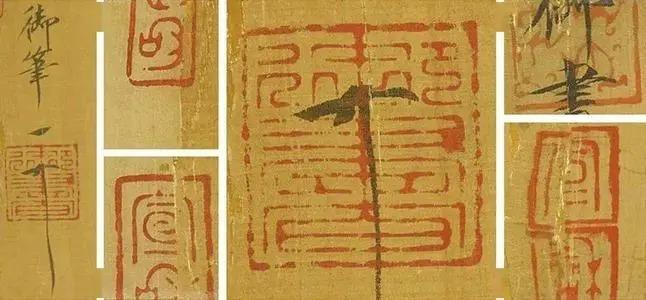
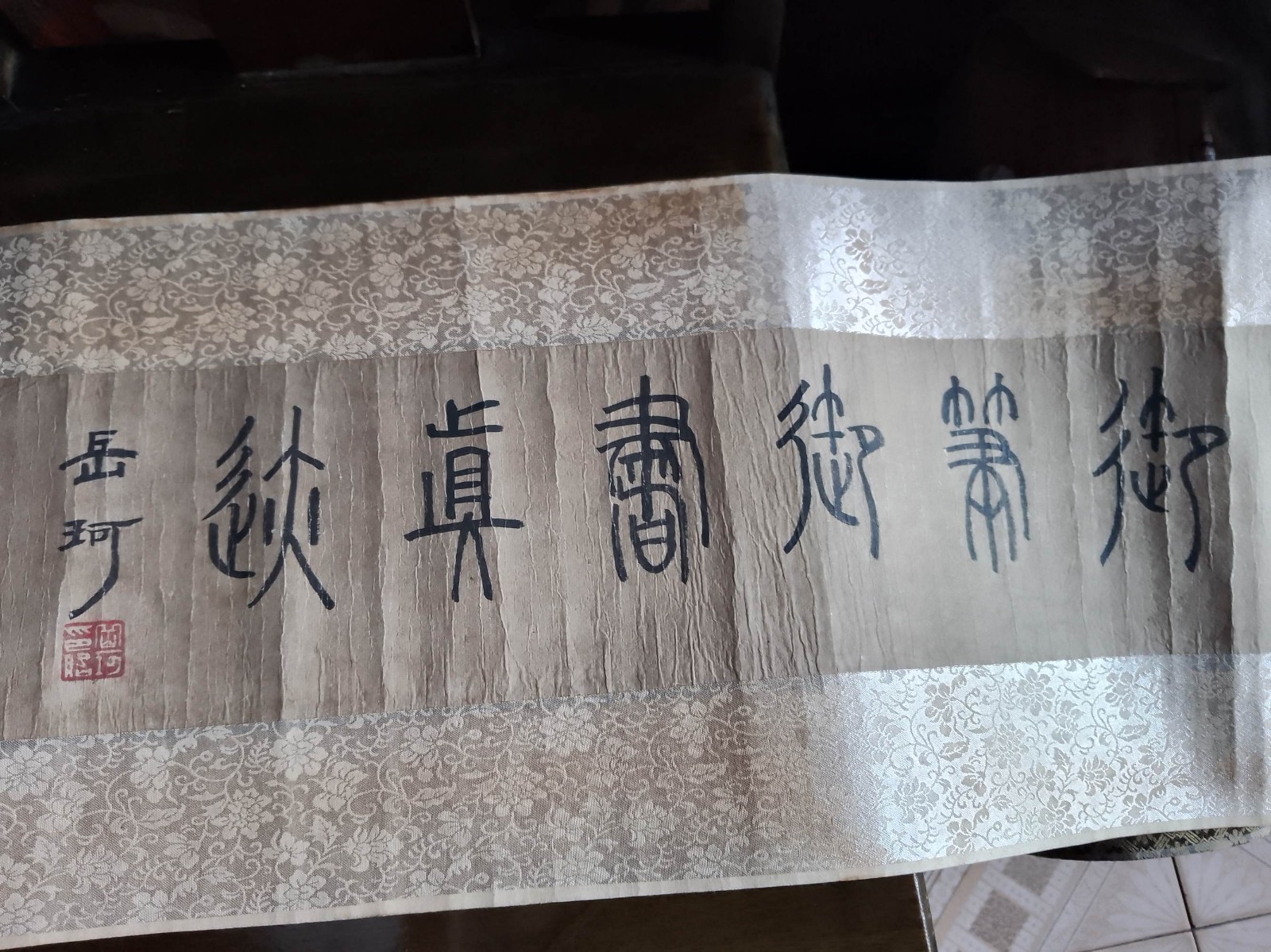
鸟官人皇 始制文字 乃服衣裳 推位让国 有虞陶
The bird official and the emperor first made words, but clothes were pushed to the position of state-owned Yu Tao
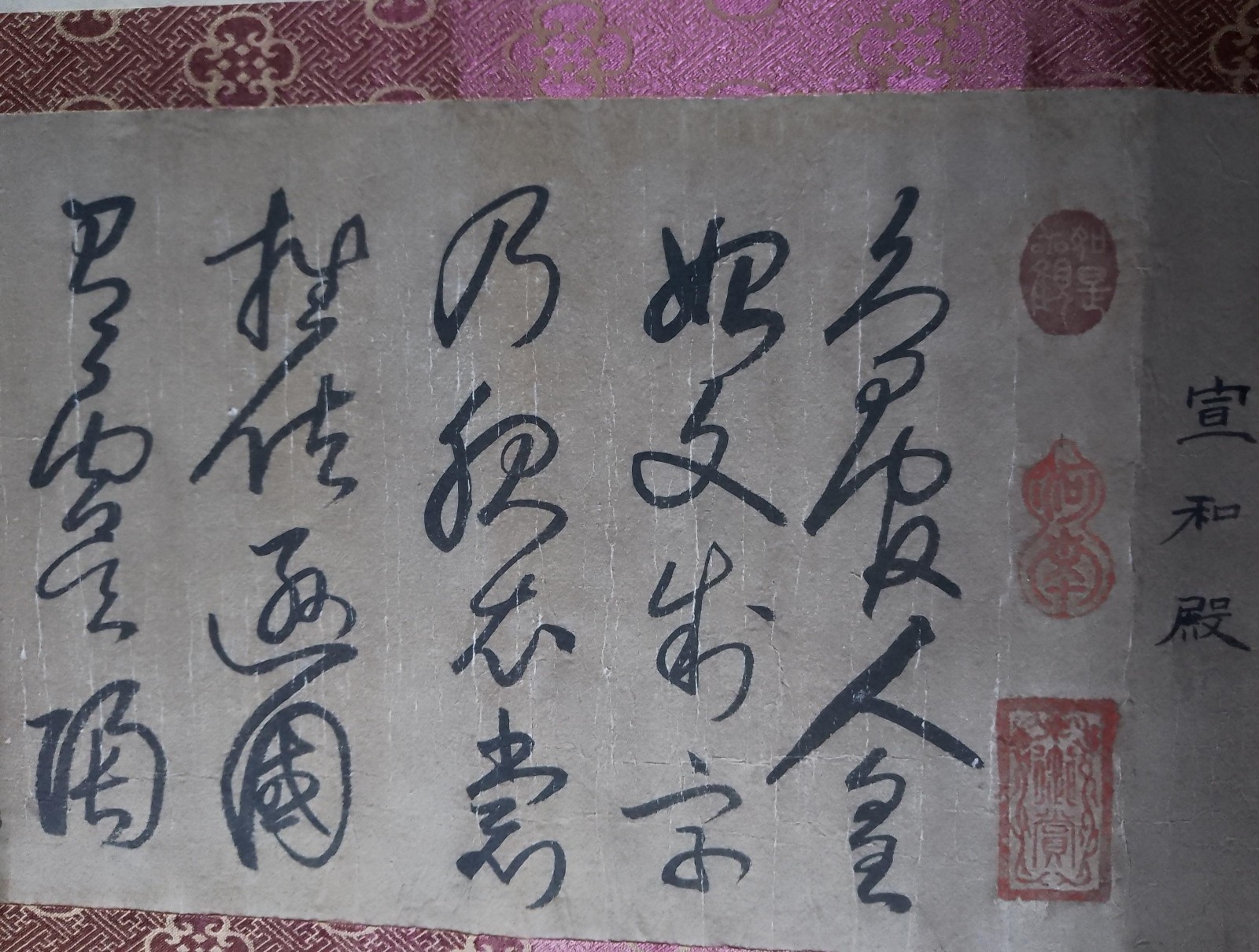
唐吊民伐罪 周发殷汤 坐朝问道 垂拱平章 爱育黎首 臣伏
Zhou FA Yin Tang sat in the court and asked, with a vertical arch and a flat chapter, AI Yu Li's first minister fell
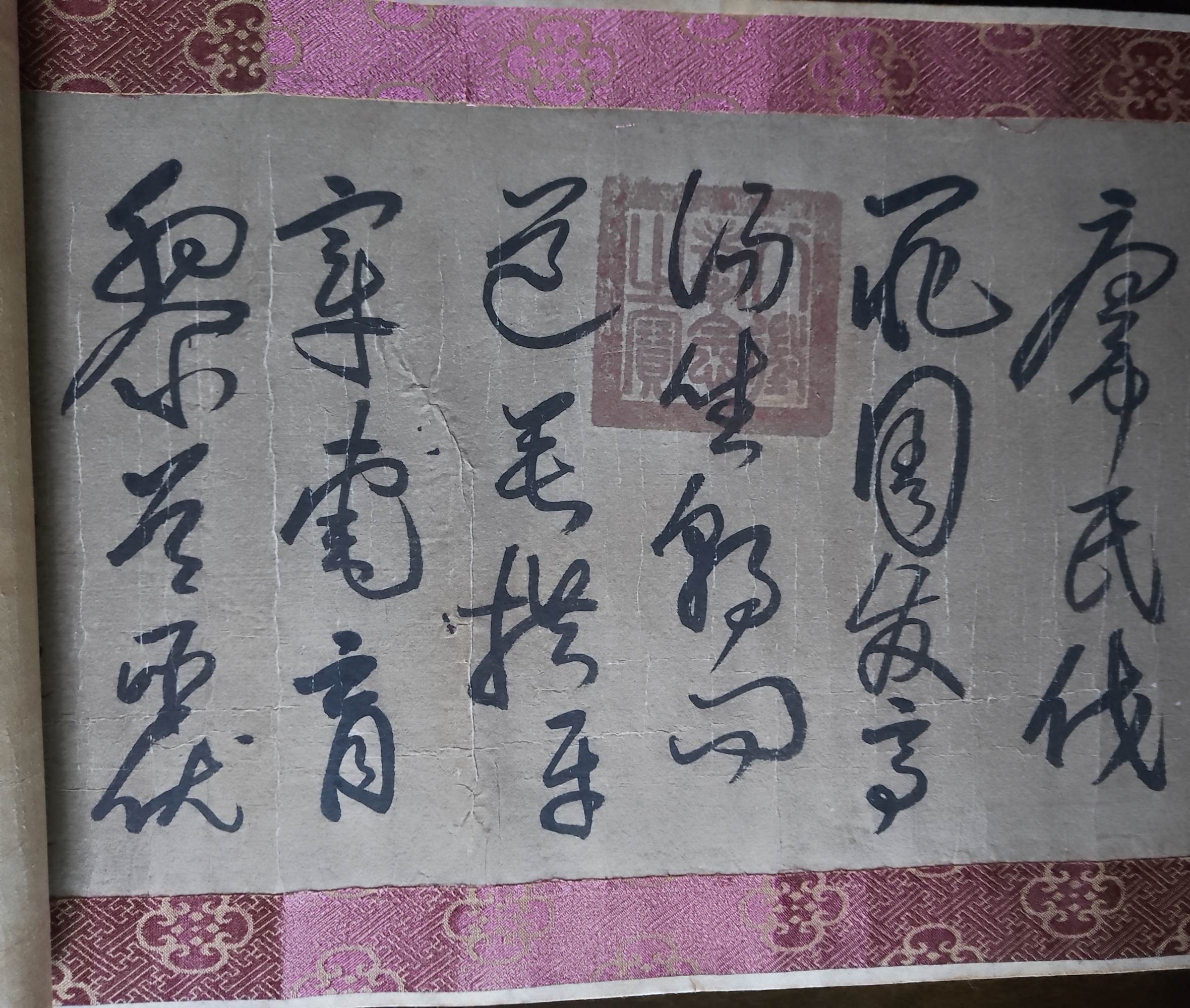
戎羌 遐迩一体 率宾归王 鸣凤在竹 白驹食场 化被草木 赖
Rong and Qiang are well-known, leading guests to Wang Mingfeng. They are turned into vegetation in the bamboo Baiju food farm
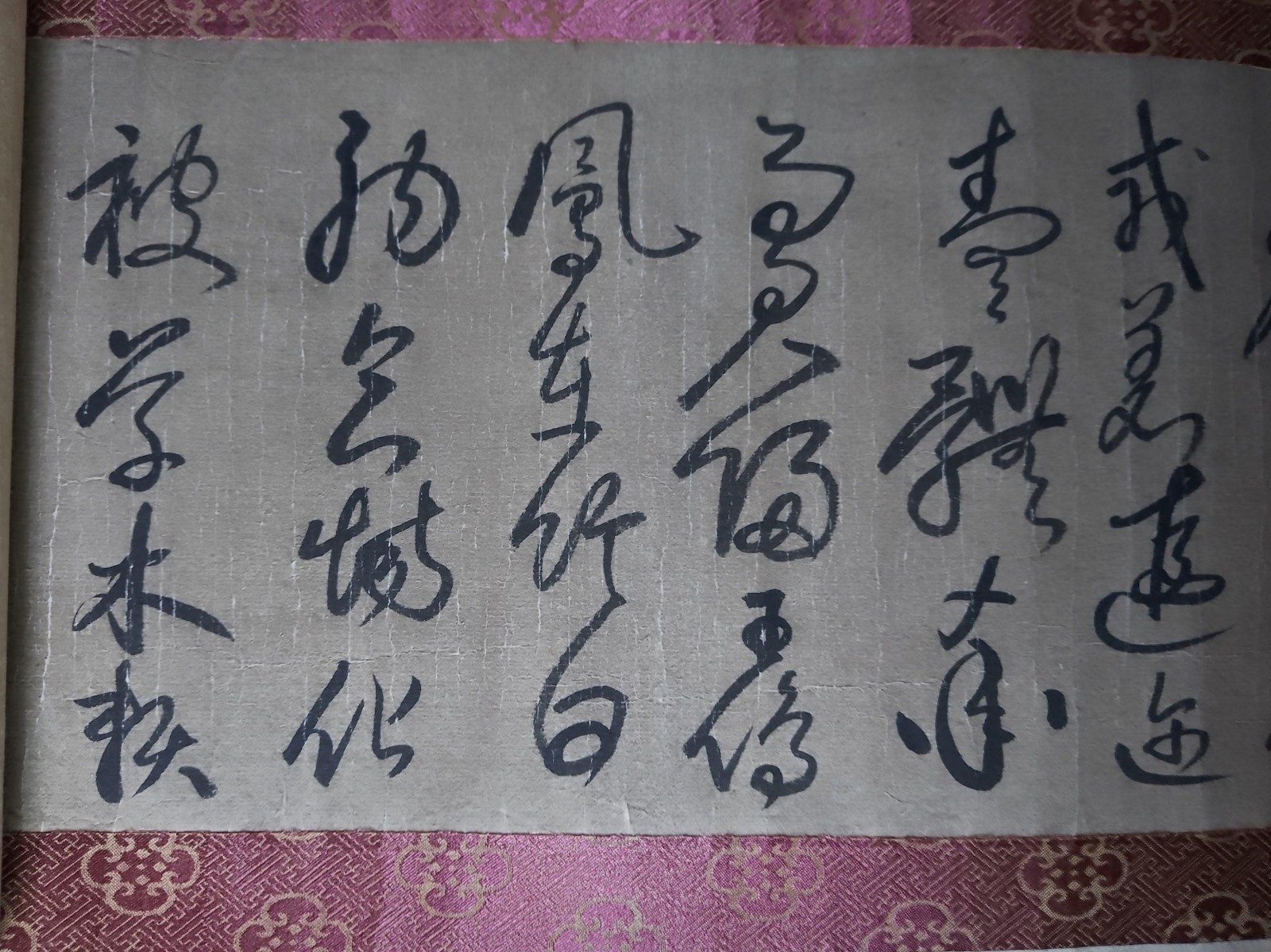
及万方 盖此身发 四大五常 恭惟鞠养 岂敢毁伤 女慕贞洁 男效才良
And Wanfang covers this body, hair, four big five Chang, respectfully. But how dare Ju Yang destroy women? It is only good for men to admire chastity
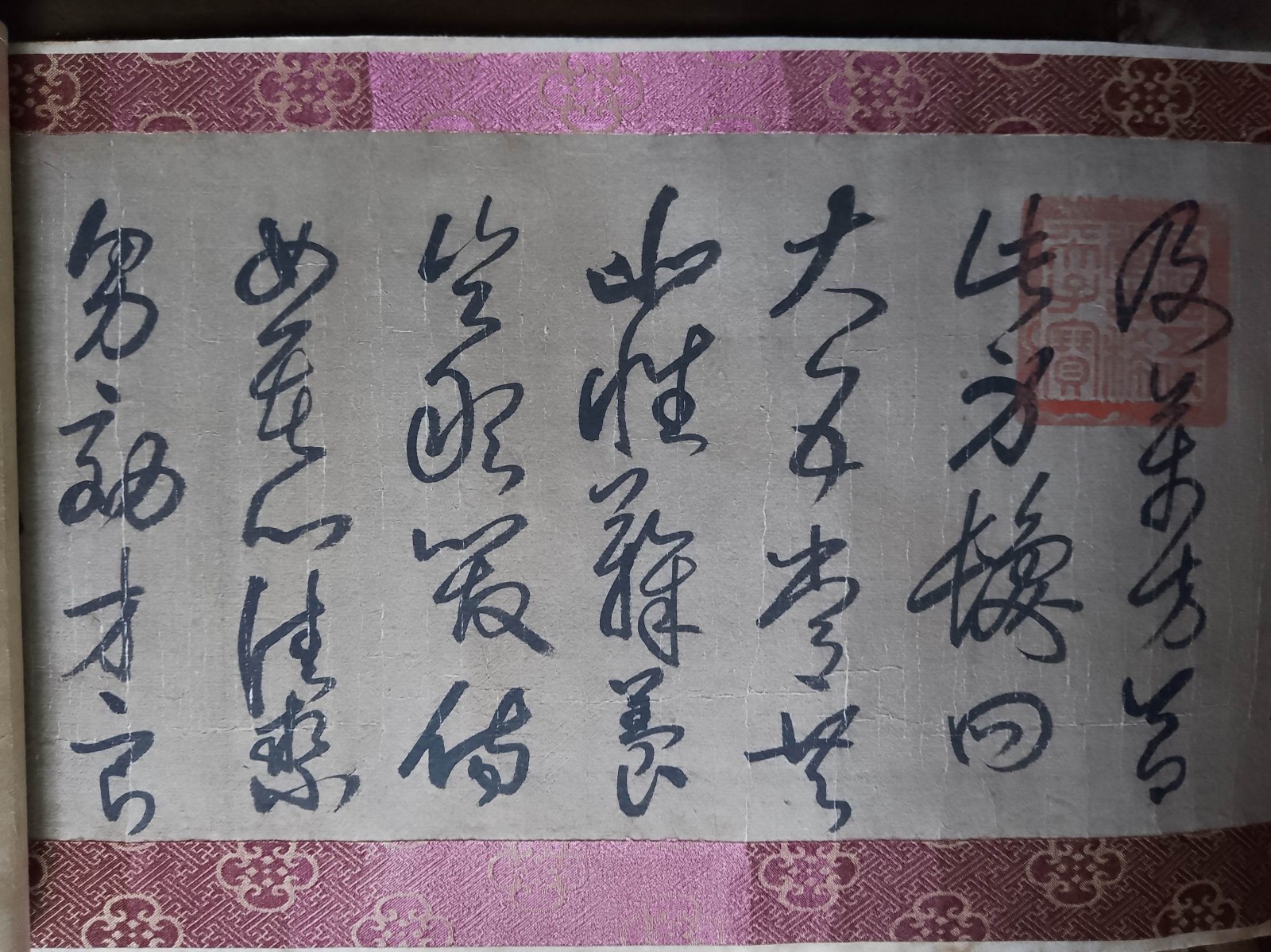
知过必改 得能莫忘 罔谈彼短 靡恃己长 信使可复 器欲难量 墨悲丝
If you know something wrong, you must change it. Don't forget to talk about it. You rely on your own long messenger to restore it. It's hard to measure ink and sorrow
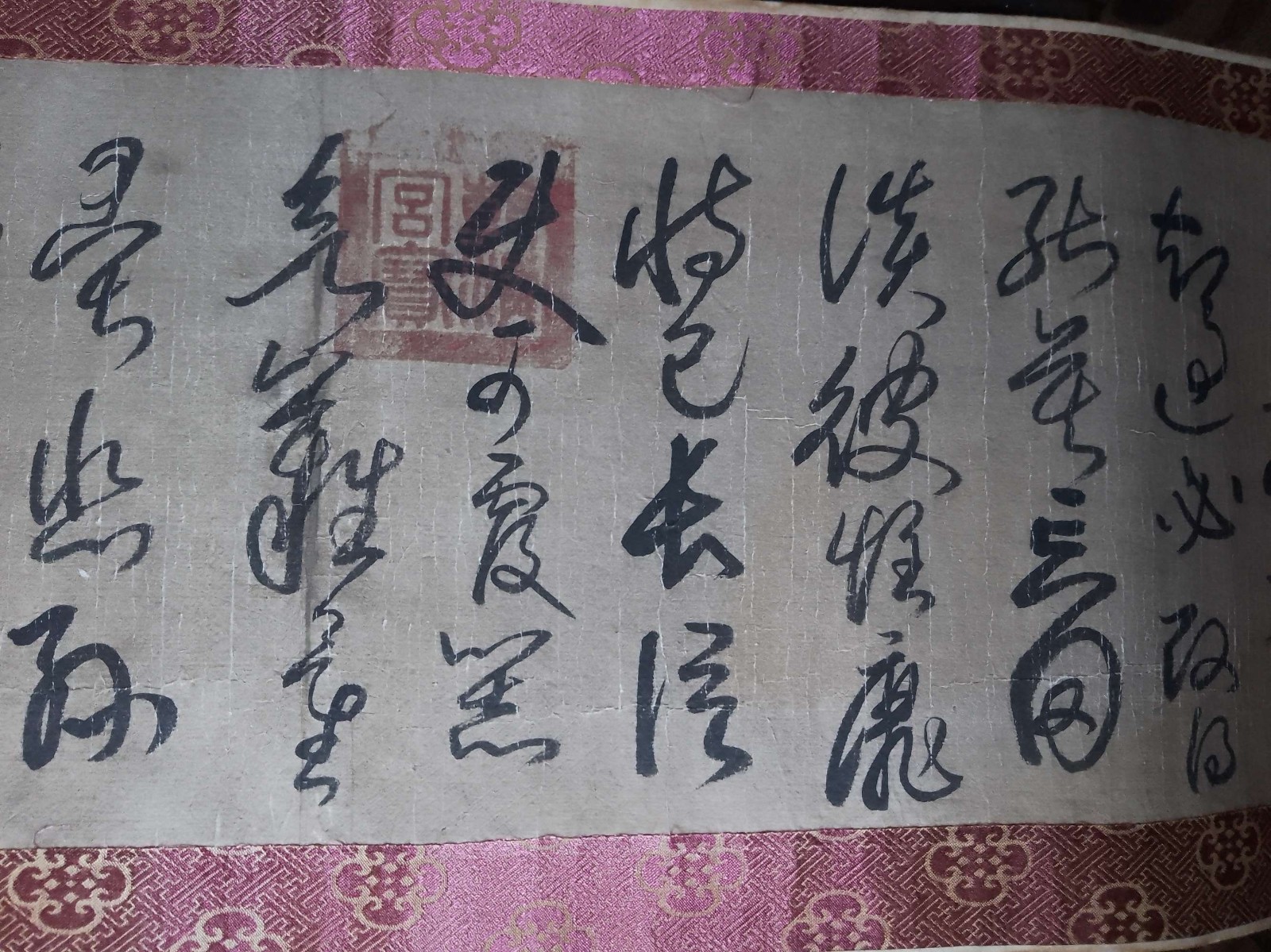
染 诗赞羔羊 景行维贤 克念作圣 德建名立 形端表正 空谷传声
Dye poetry praises the sight of the lamb, Wei Xianke reads it as holy virtue, builds a name, stands in shape, and expresses the sound in the empty valley
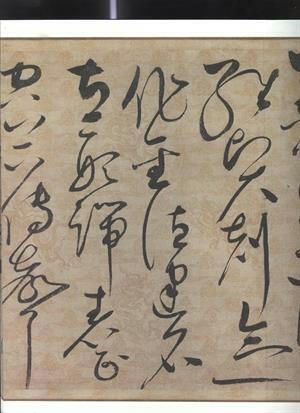
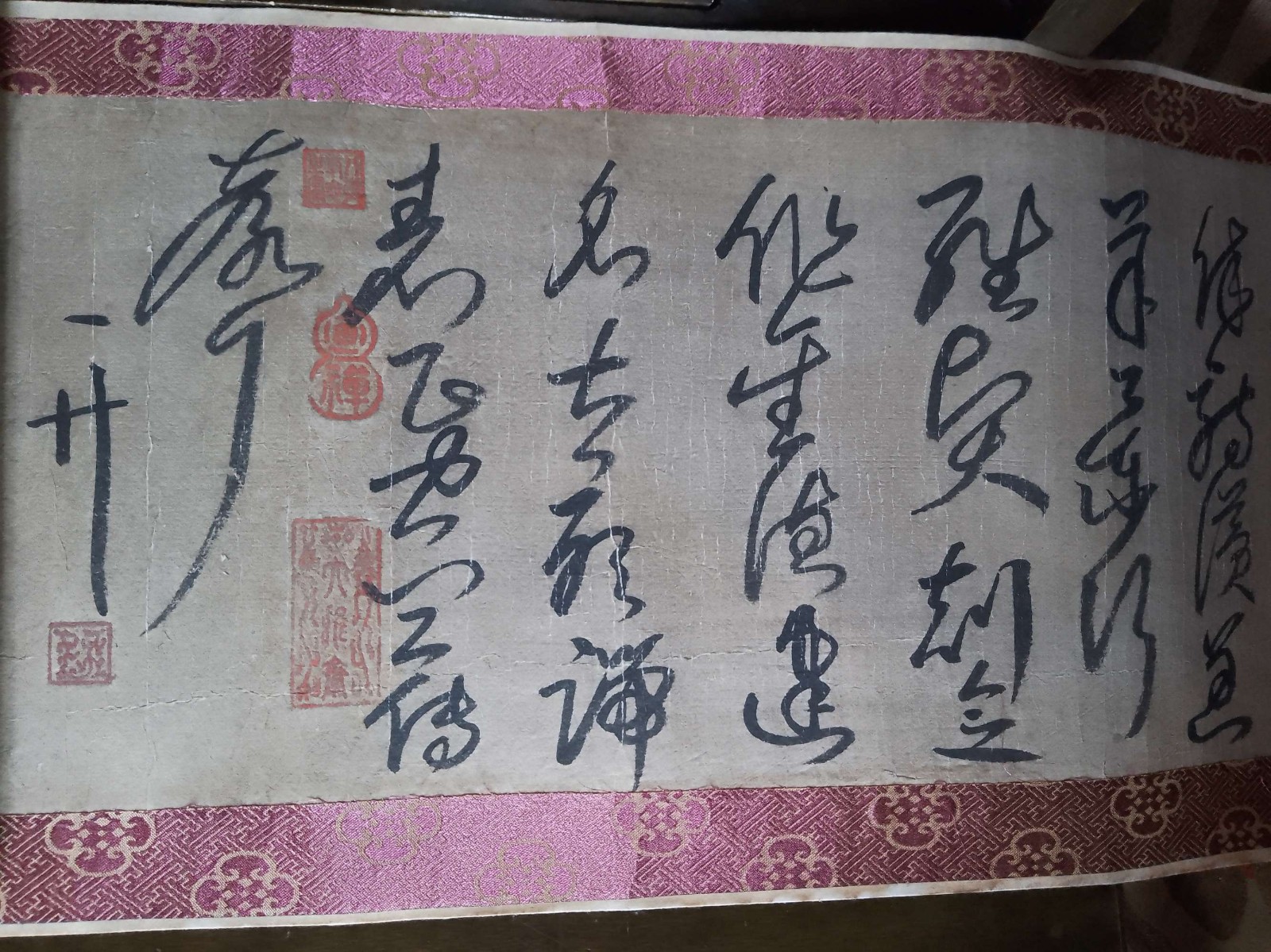
卷后首跋:徽宗草书传世墨迹绝品 黄伯思(1079—1118年北宋晚期重要的文字学家、书法家、书学理论家)识
The first postscript after the volume: Huang Bosi (an important philologist, calligrapher and calligrapher theorist in the late Northern Song Dynasty from 1079 to 1118), a masterpiece of calligraphy handed down by Huizong cursive script
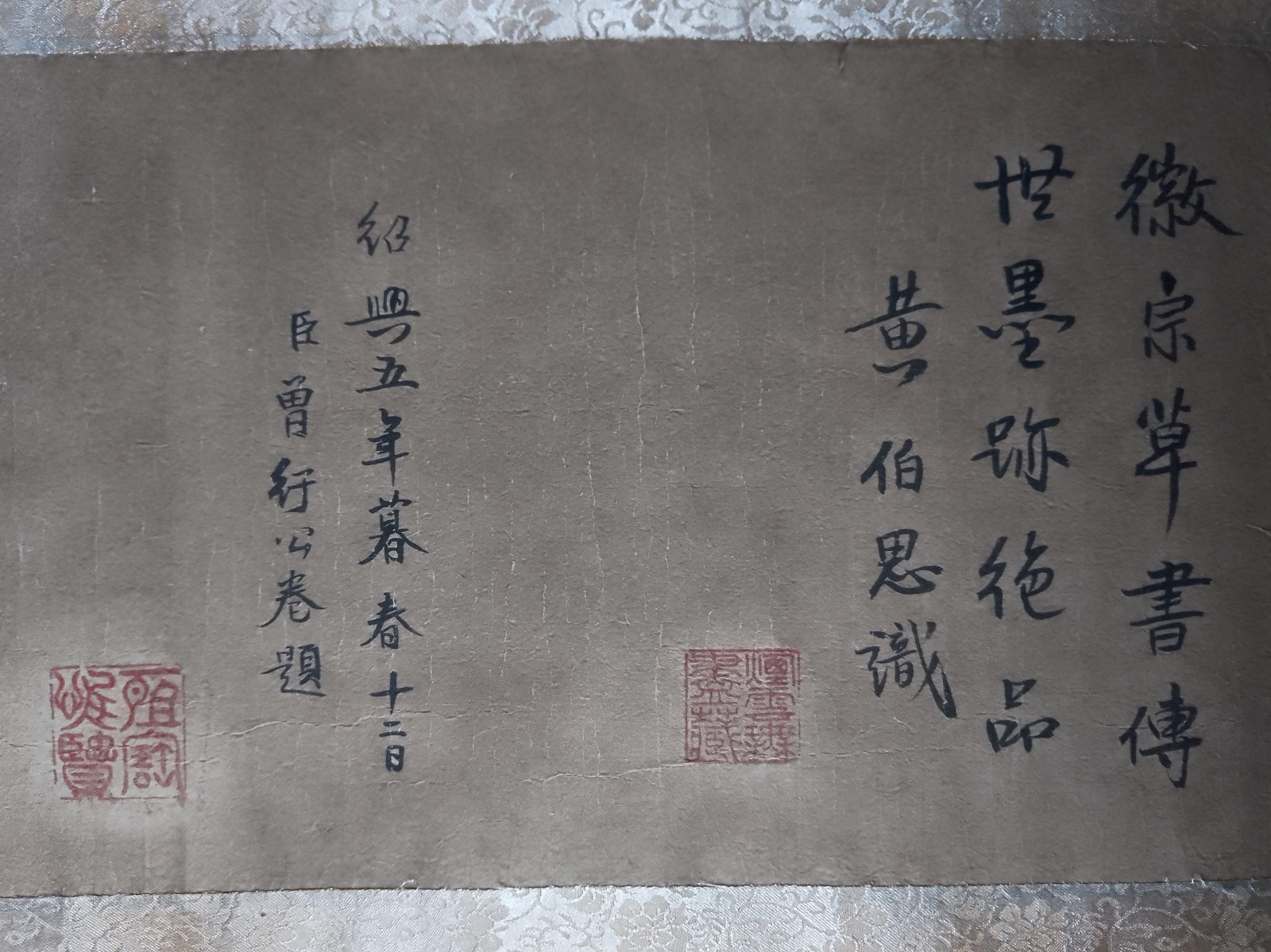
跋文二:绍兴五年暮春十二日 臣曾行公卷题【王曾(978年12月27日~1038年12月12日)字孝先。青州益都(今山东省青州市)人。北宋名相、诗人。】
Postscript 2: on the 12th day of the late spring of the fifth year of Shaoxing, the minister once issued the public volume Title [Wang Zeng (December 27, 978 ~ December 12, 1038) with the word Xiaoxian. He was born in Yidu, Qingzhou (now Qingzhou City, Shandong Province). He was a famous minister and poet of the Northern Song Dynasty.]
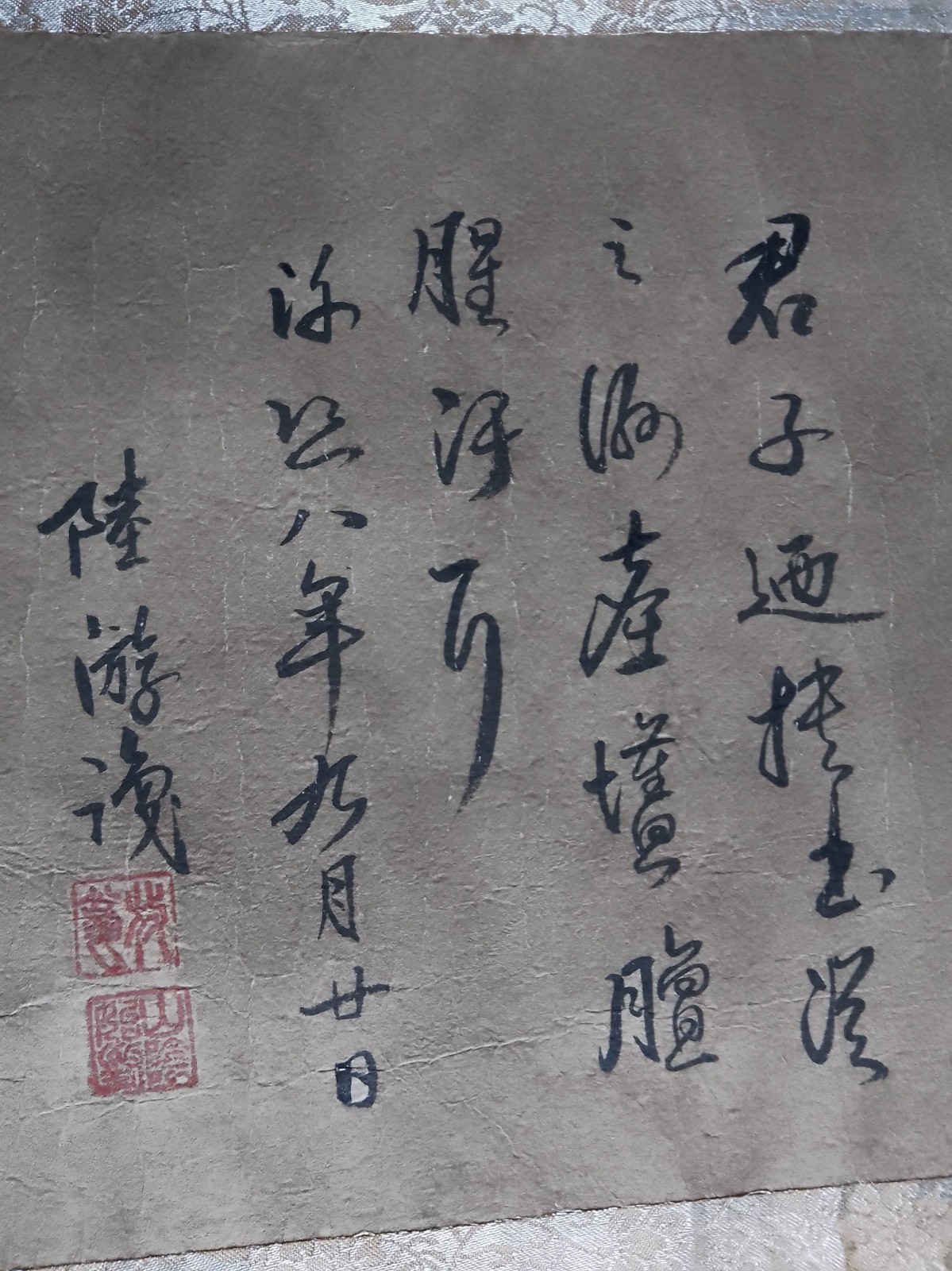
跋文三:君子迺挾书(挟)從(从)之,渝尘增膻(羶)腥汗耳
Postscript 3: the gentleman Kennedy followed the book, and the dust of Chongqing increased the smell of smell and sweat
淳熙八年九月廿日 陆游识 钤印:“放翁” “山阴始封”
On September 20, the eighth year of Chunxi, Lu you recognized the seal: "release Weng" and "seal in the shade of the mountain"
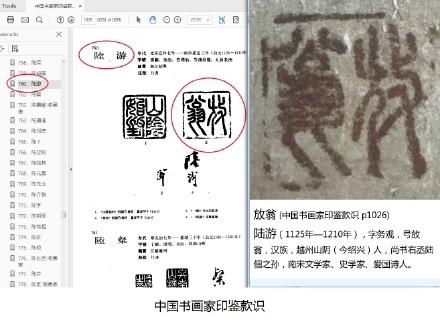


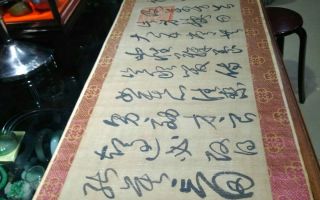
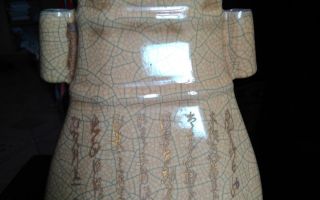
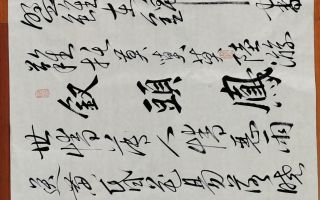
0 条 评 论 Write a Response